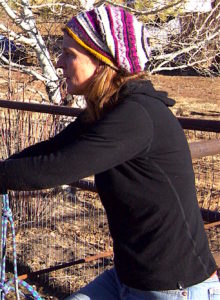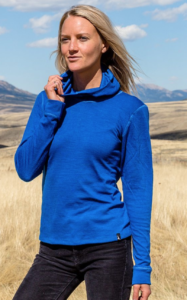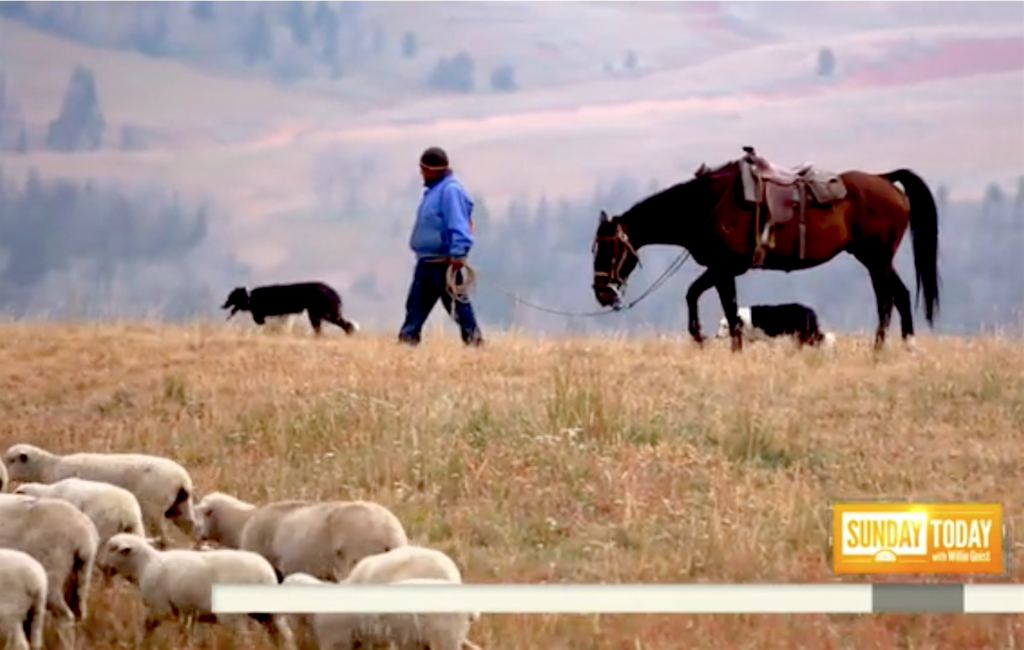 “There are two kinds of people in this world,” says my narrow-minded self. “People who wear black and people who do not wear black.
“There are two kinds of people in this world,” says my narrow-minded self. “People who wear black and people who do not wear black.
I fall into the latter camp. Or, at least, that’s what I thought before trying out the Comet Tunnel Hood from Duckworth. In black.
I’m a fan of the new company; it raises and sheers some 10,000 sheep near Dillon, Montana, then ships the wool to the South Carolina where it’s milled and sewn into an array of styles, from jackets to t-shirts. American-made, from animal coat to human coat. Sheep to Shelf, as the company notes.
We reviewed the Vapor Tee here.
So, if I don’t wear black, why has the Comet Tunnel become my go-to top this winter?
The intelligent fabric layers and content help explain:

The top also comes in blue and white
The inner fabric is a polyester microfiber that feels good against the skin. The outer layer is 100 percent merino wool. The result is a cozy, insulating, yet breathable base layer that serves as well for hikes and horse work as it does for desk work in a chilly office.
Given my varied days (outside, inside, outside, inside, as I juggle chores and treks with computer work), I usually opt for cardigans or tops with zippers. But the Comet Tunnel has a chameleon-like ability to adjust. Being wool, it also mitigates any body odor much better than cotton or straight synthetic garments. Backcountry camping or otherwise traveling with limited gear? This top is tough and perfect.
My narrow-minded self discovered one more thing about wearing black: jewelry looks great on it.
Despite the label warnings: gentle machine wash, hang dry, the Comet Tunnel Hood is easy to care for. I wash it with the rest of my clothes and line dry it with the rest of my clothes. Lately, I find myself wearing it fresh off the laundry rack, without even folding it and putting it back in a drawer. Am I lazy or savvy?
I say savvy. Yes, Duckworth items are pricey. But if you use them and come to rely on them more than the other dozen options in the drawer, they quickly begin to recoup their value. I’ve found this to be true with both the Comet Tunnel and the Vapor tee. Consider them investments to a happier (and more open-minded) self.
Check out this Today Show feature here.
Read more about sheep history in Montana and the Helle ranch.

Fun Fact: If you are wearing wool in the winter it will actually heat up when you transition from inside your house to the outdoors. Wool is defined as a hydrophilic material which means that it loves water. When wool absorbs water it takes it into the core of the fiber (synthetic fibers cannot do this). The core of wool is essentially constructed of a chain of amino acids. When water is absorbed into the core of wool it bonds to these amino acids via a hydrogen bond. This bond, which is chemical, creates heat. This is why wool keeps you warm when it’s wet (it actually heats up). In the winter time your house will generally have a very low humidity due to you having to heat the air. When you transition from a low humidity environment (indoors) to one with a higher humidity (outside) wool will absorb the increased humidity and heat up. Case in point. It is currently 64 degrees (Fahrenheit) in my house with a relative humidity of 28%. It is 9 degrees outside with a humidity of 79%. So, as I go outside the hydrophilic nature of wool will absorb the increased humidity and due to the process described above actually heat up. Can’t make this stuff up.
Thanks, Jeff. We appreciate nerds like you.
Cool explanation of wearable wool….or should I say warm explanation! Love it, thanks!!